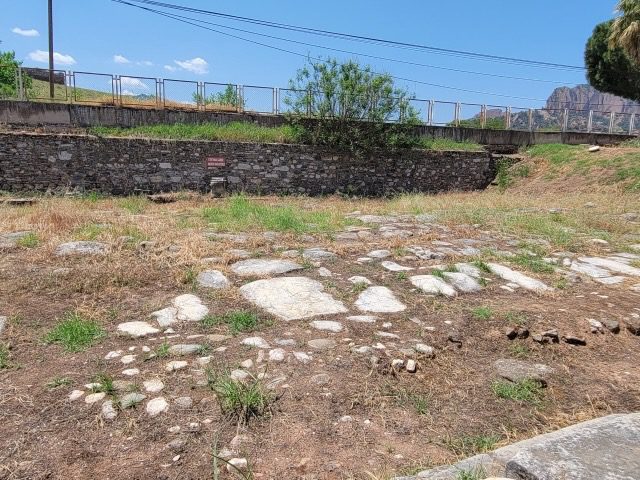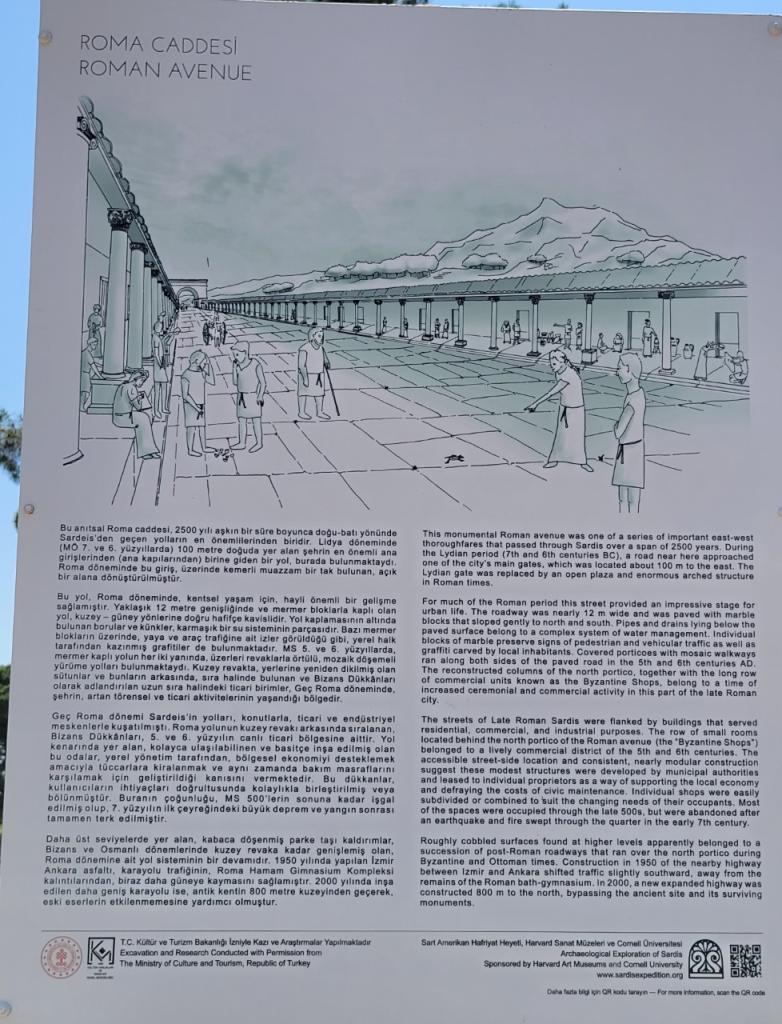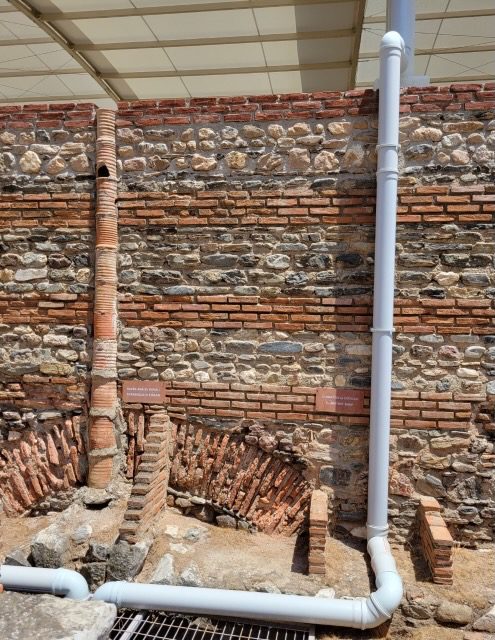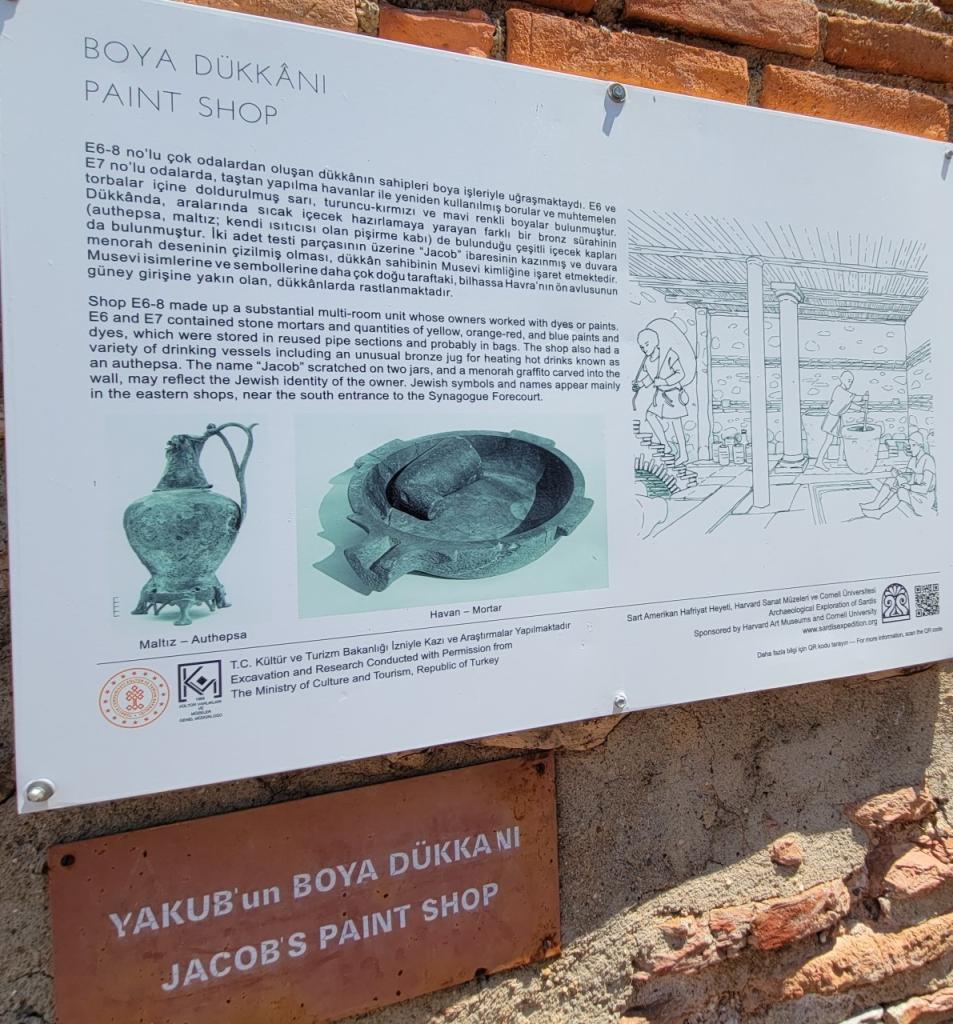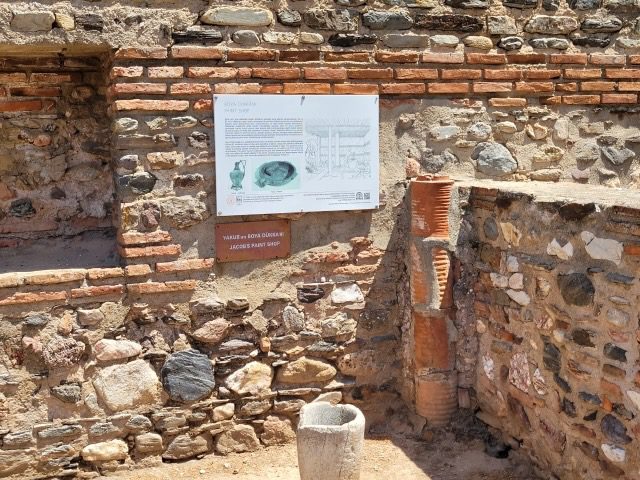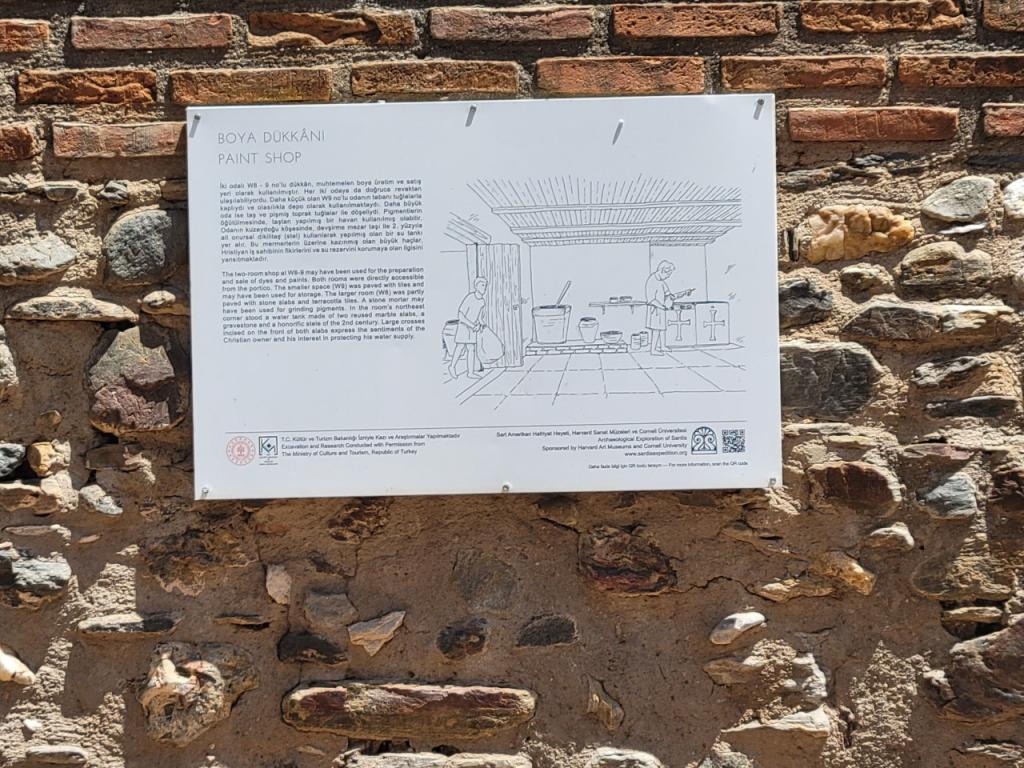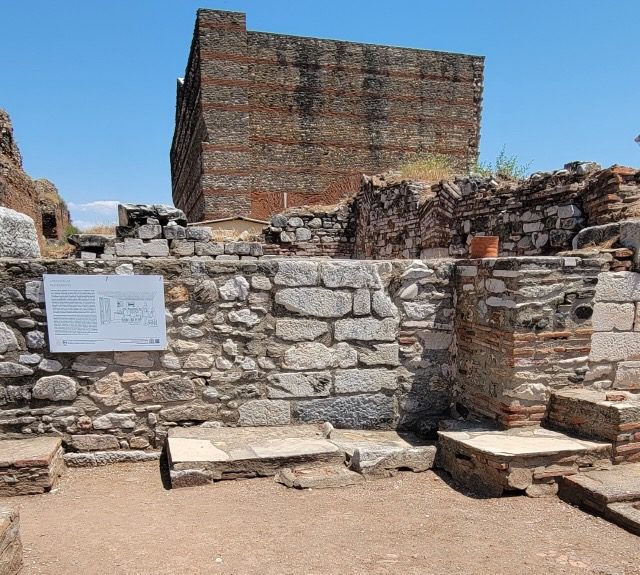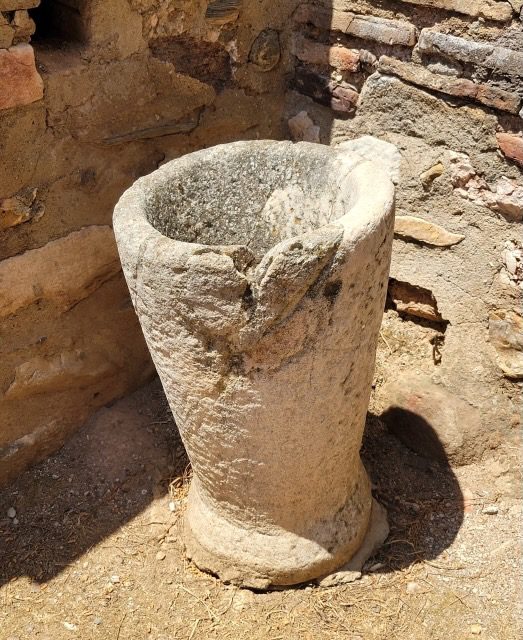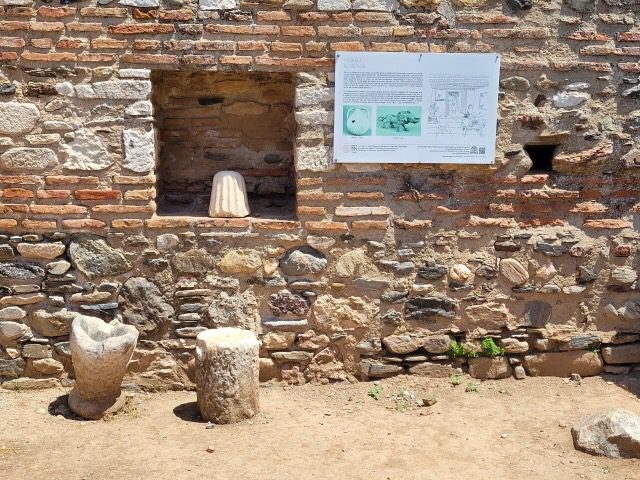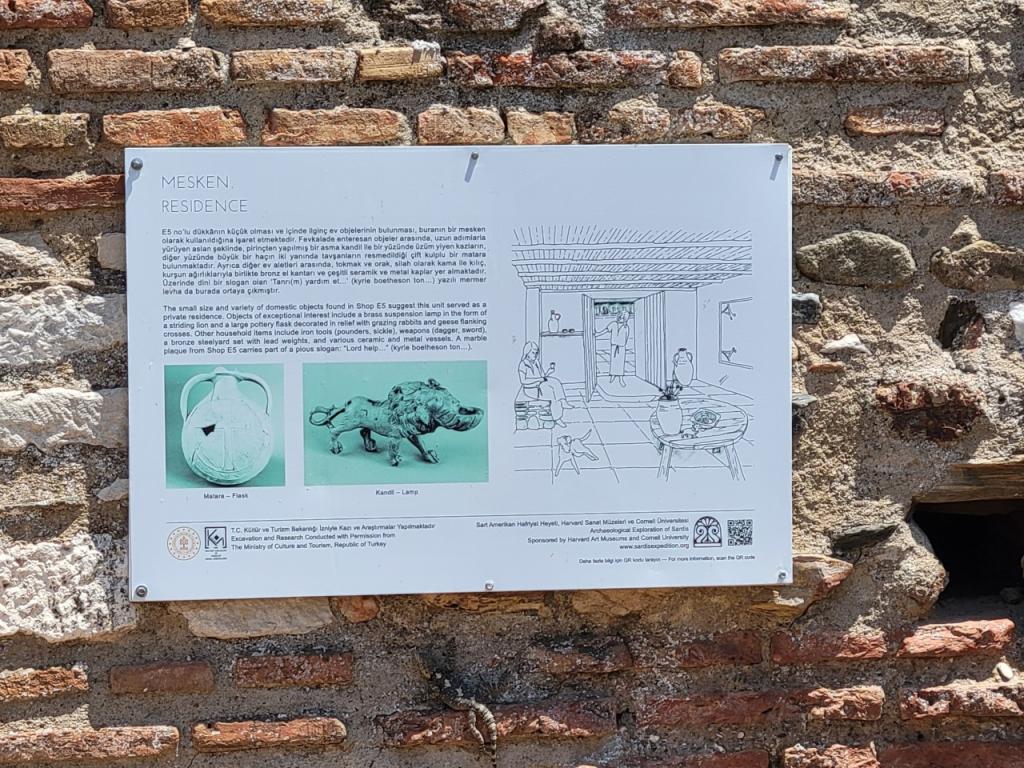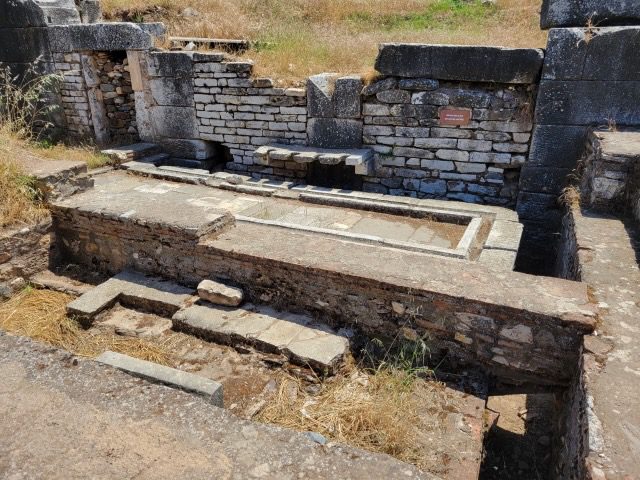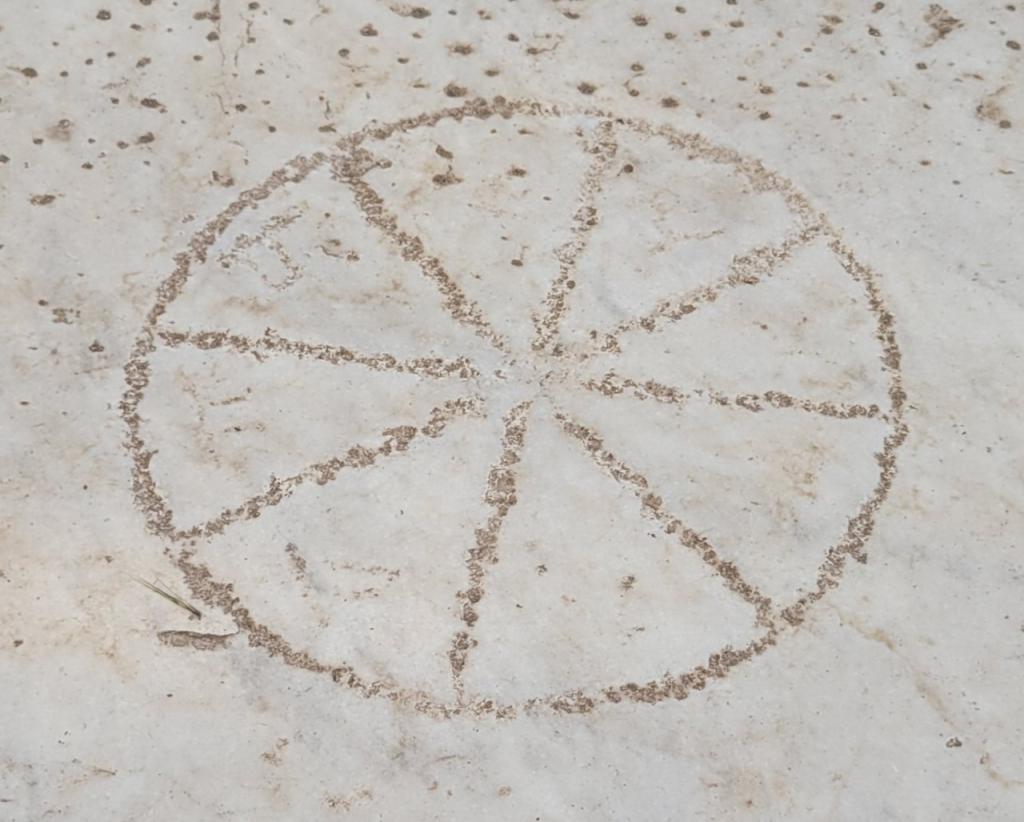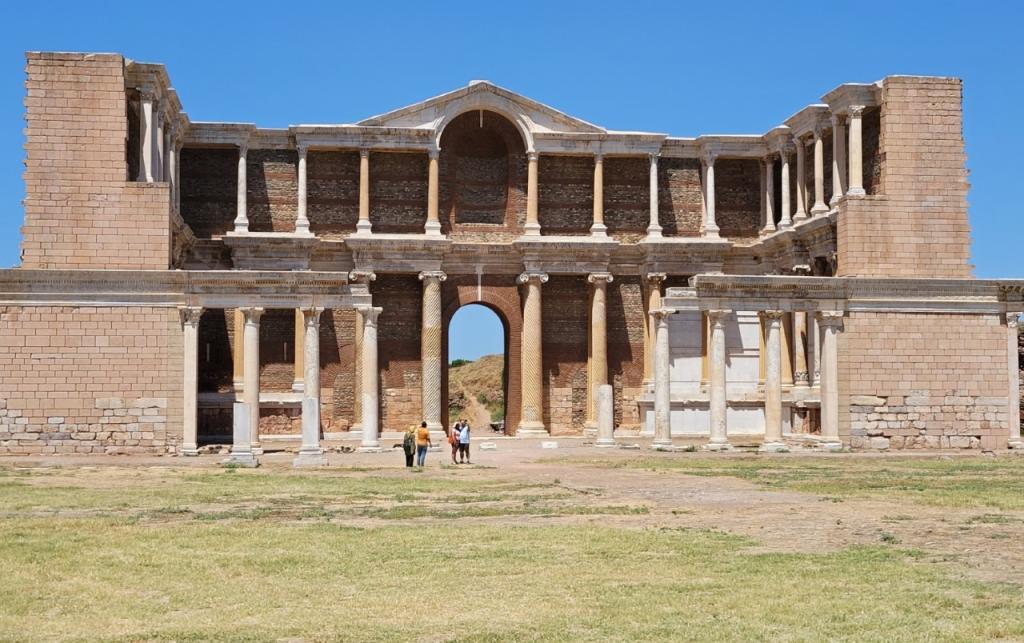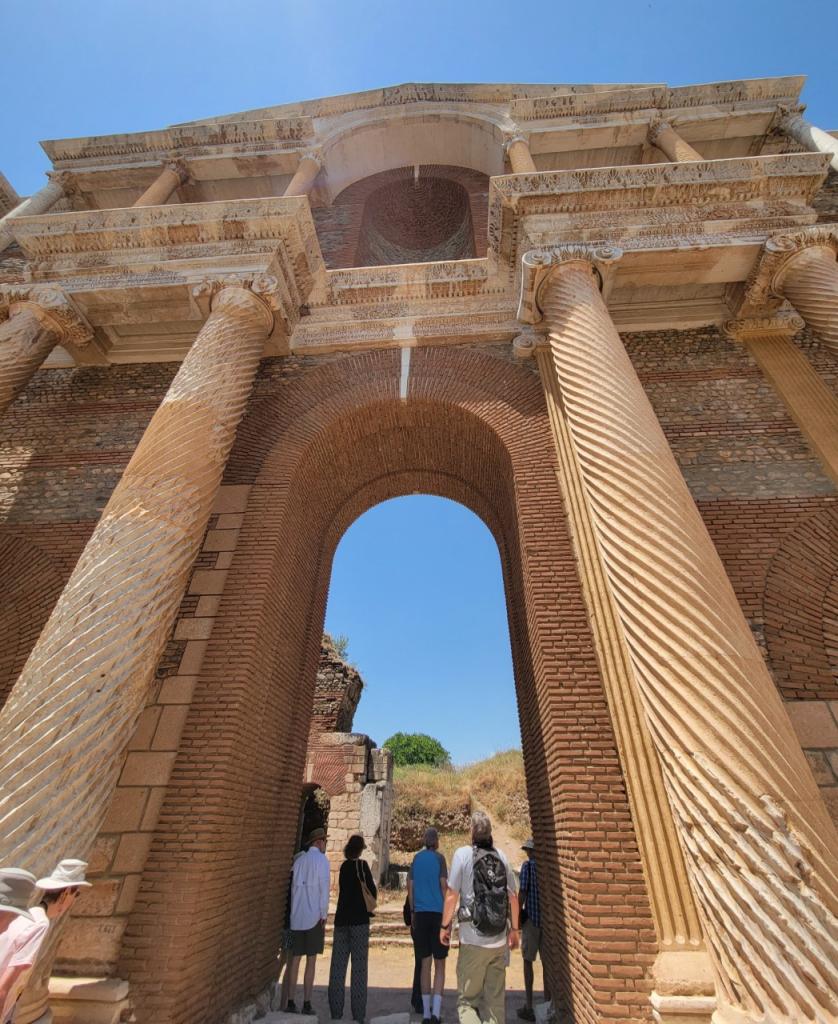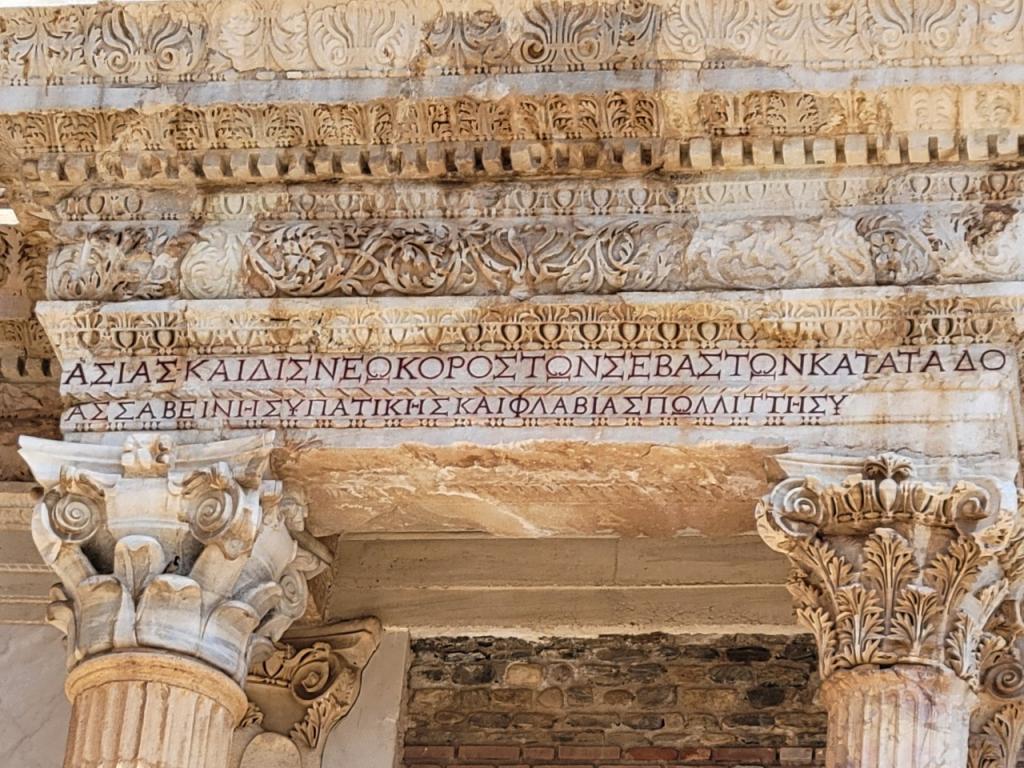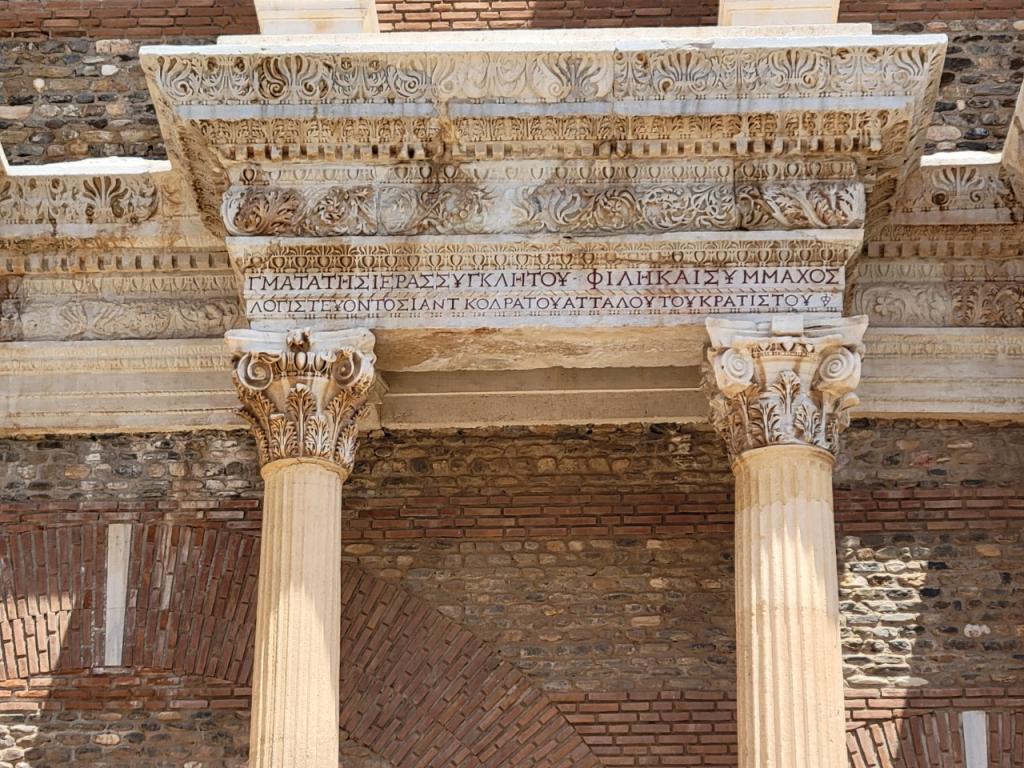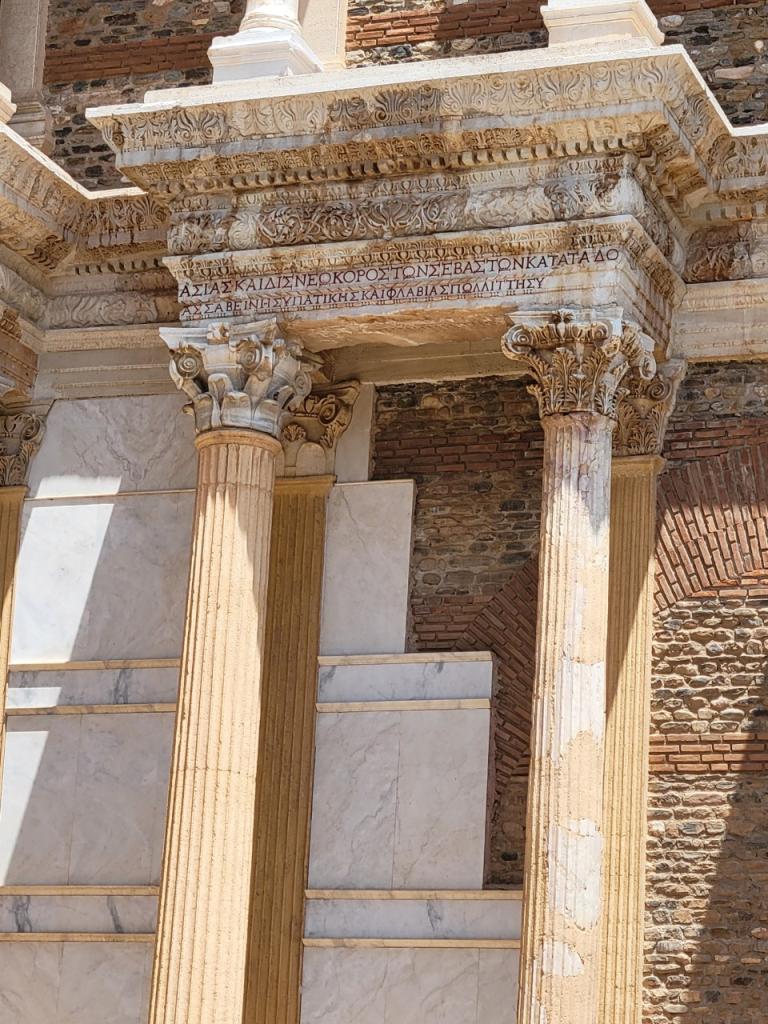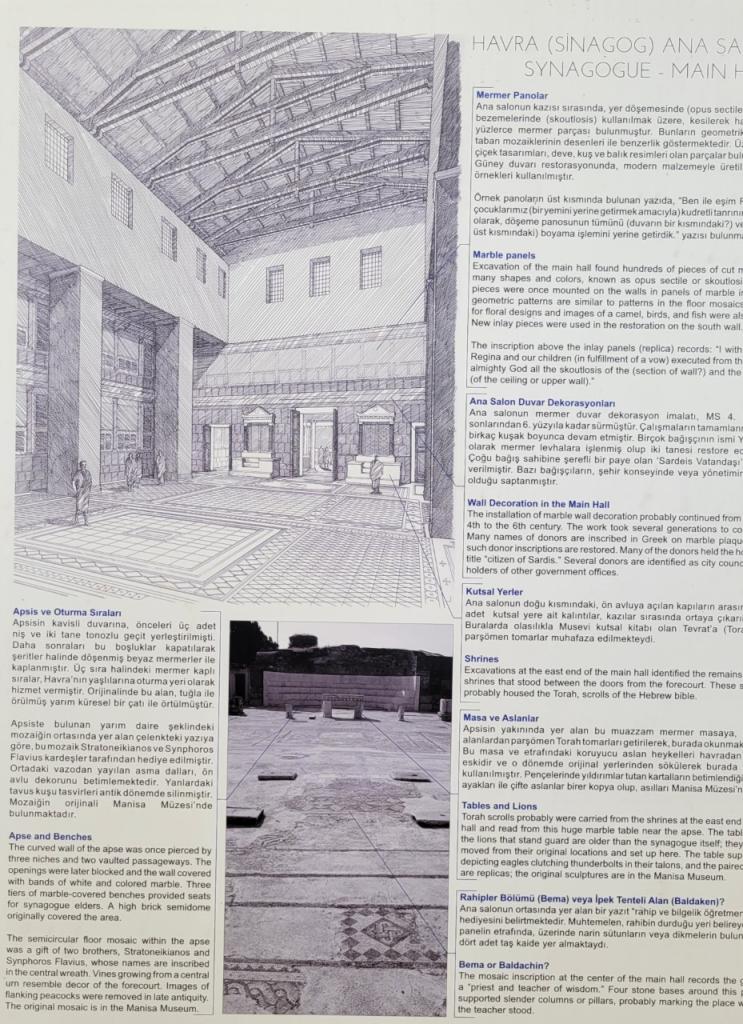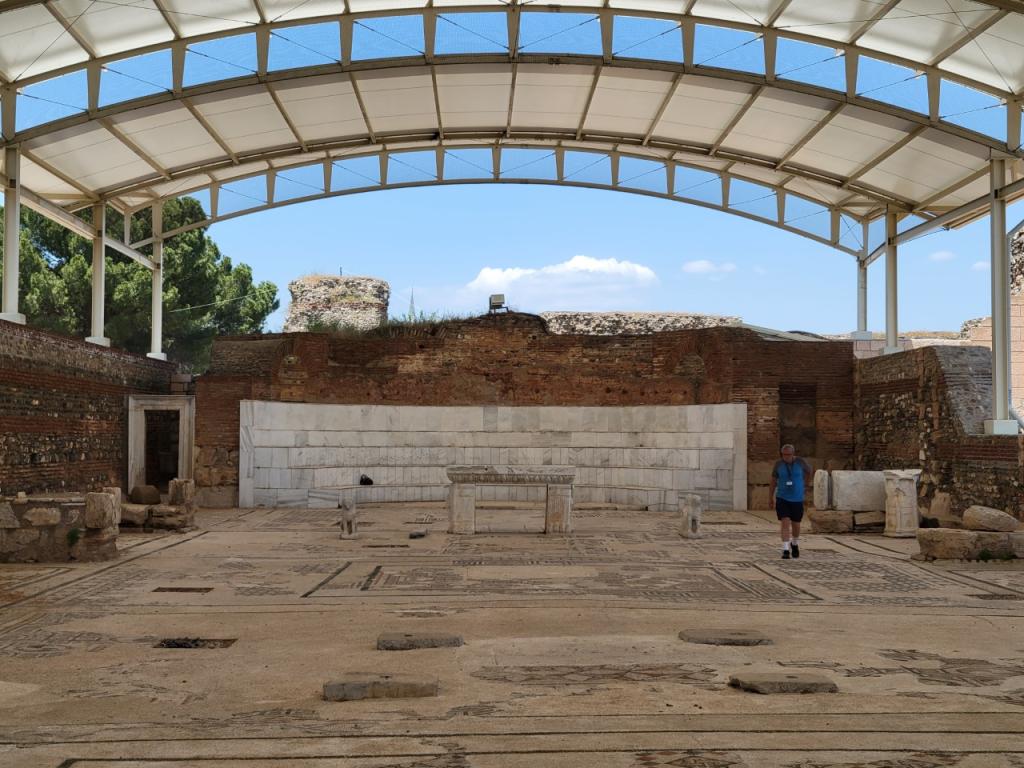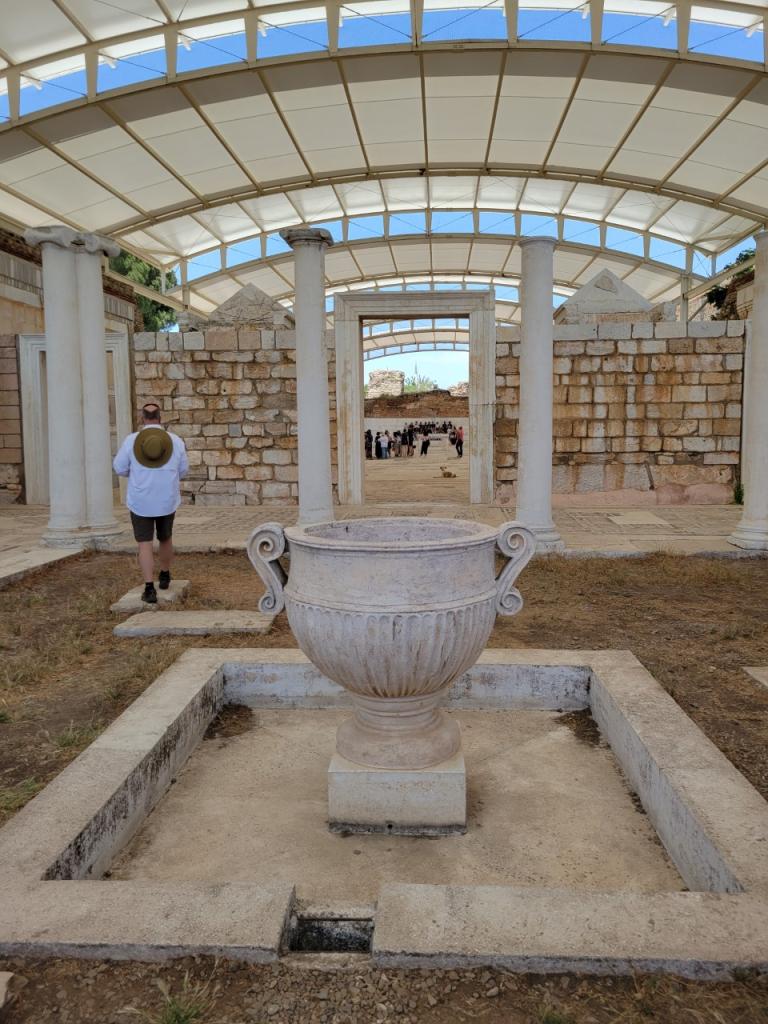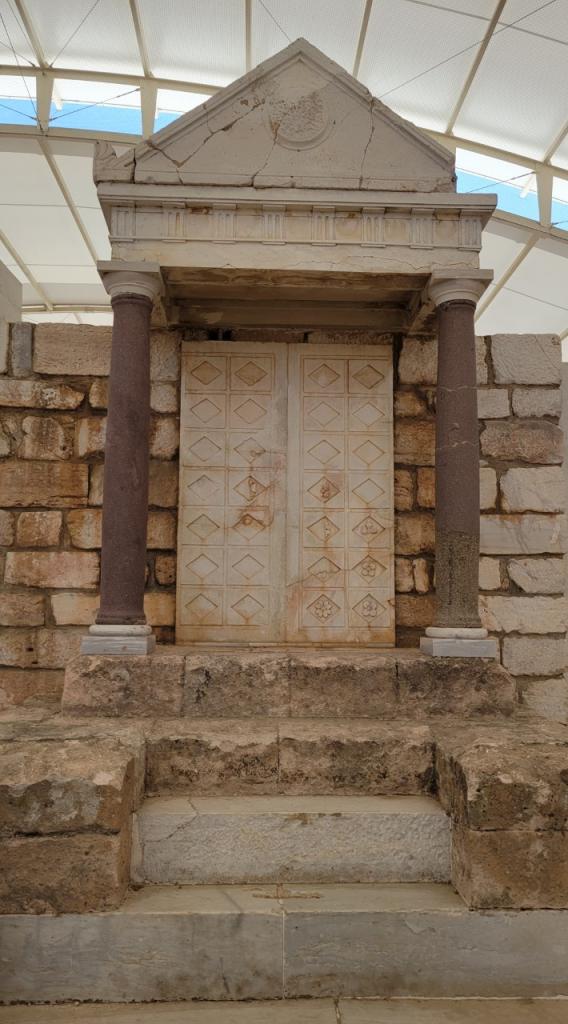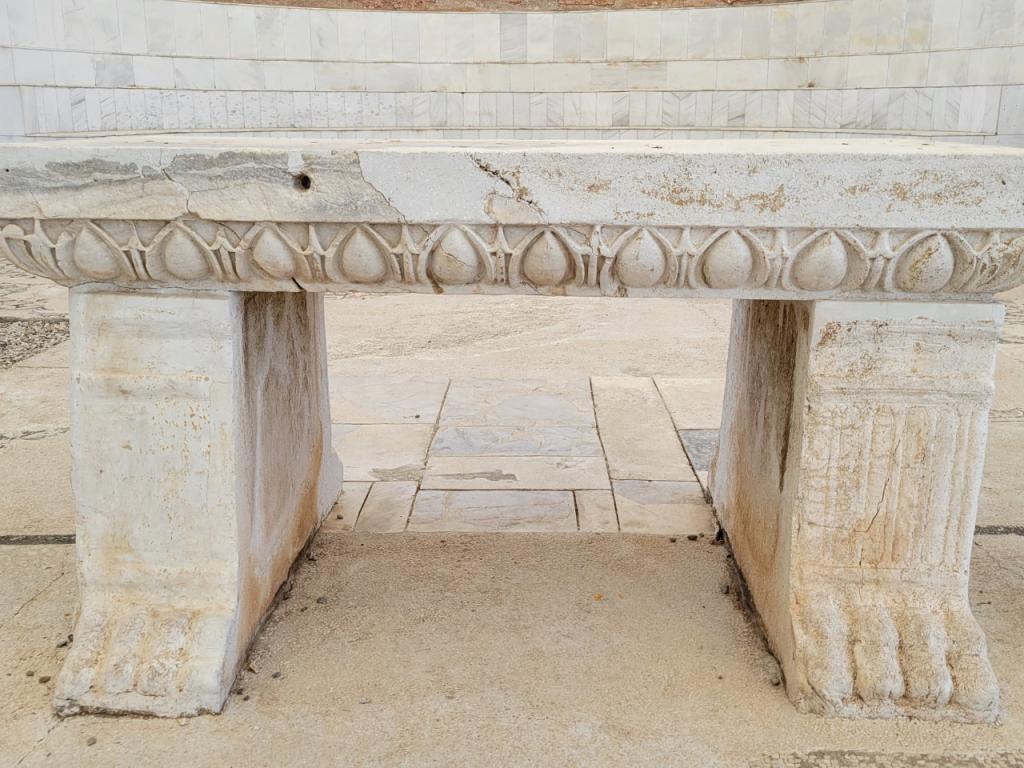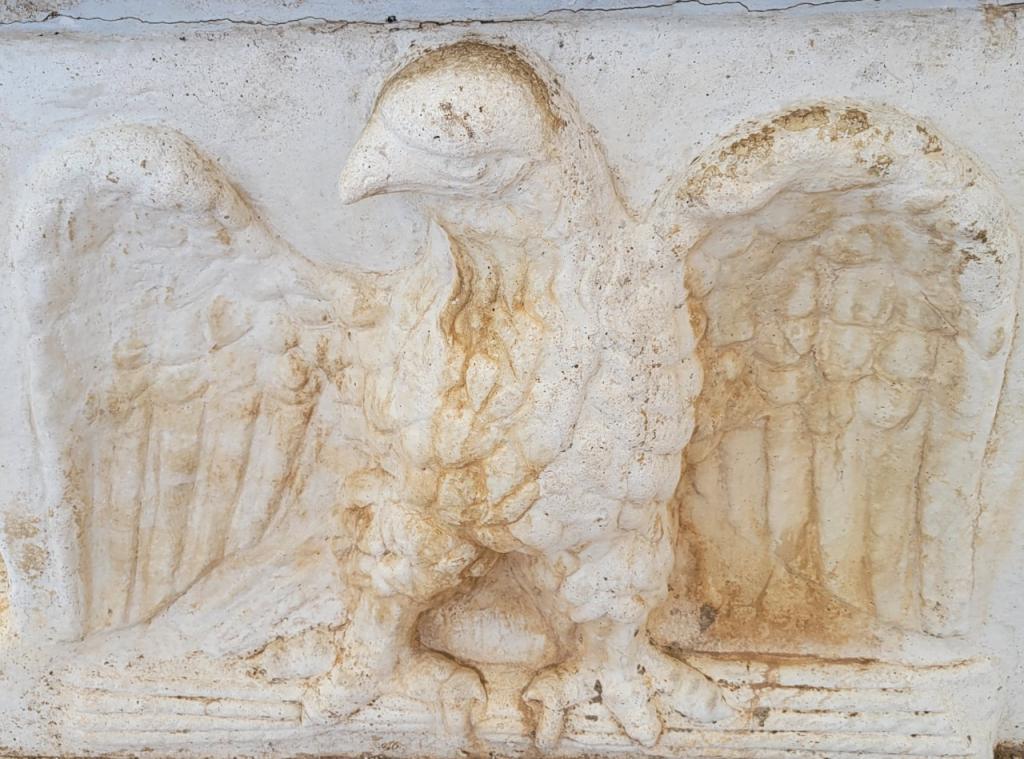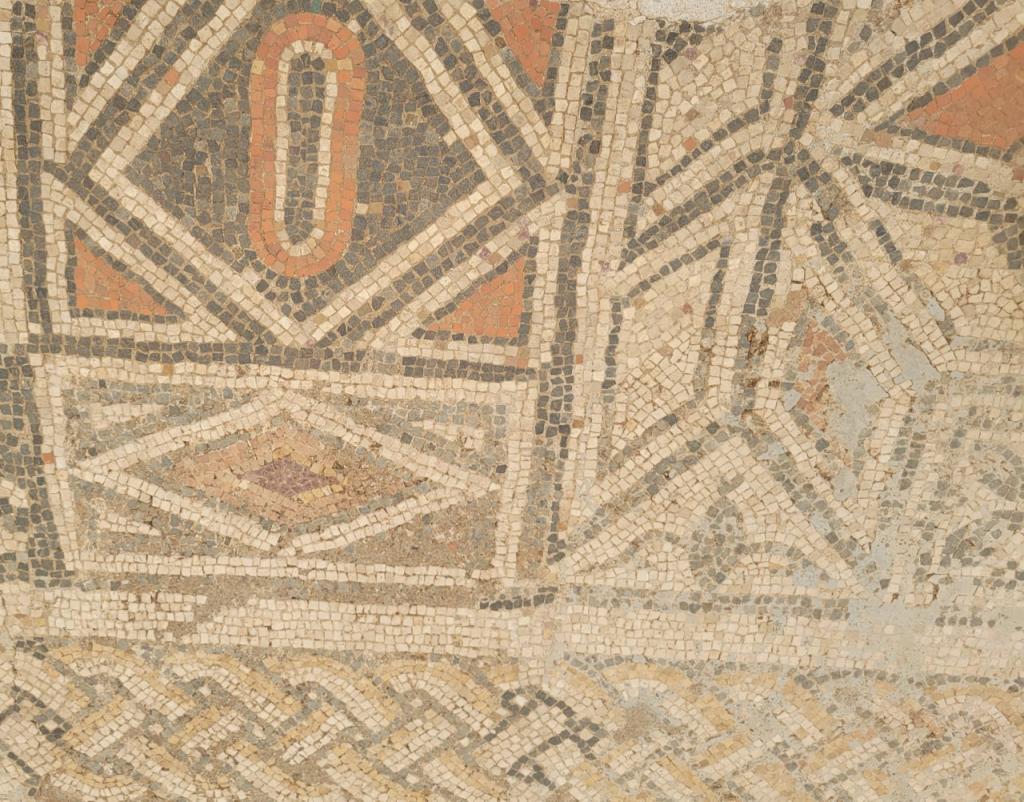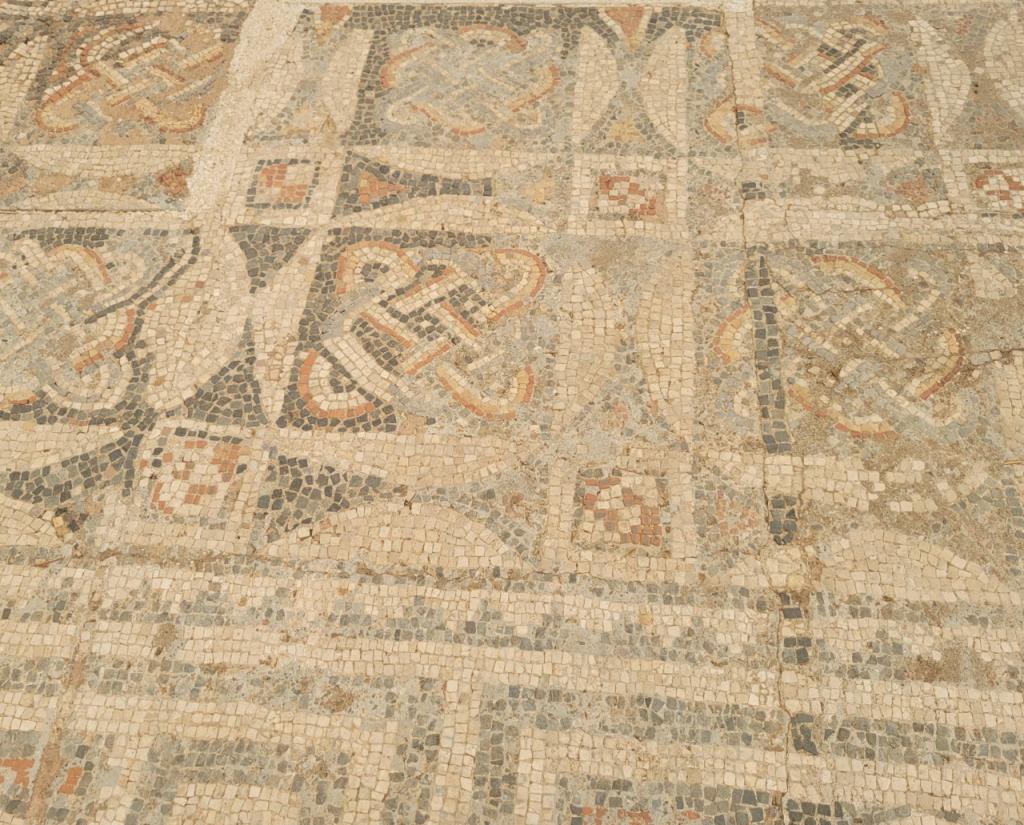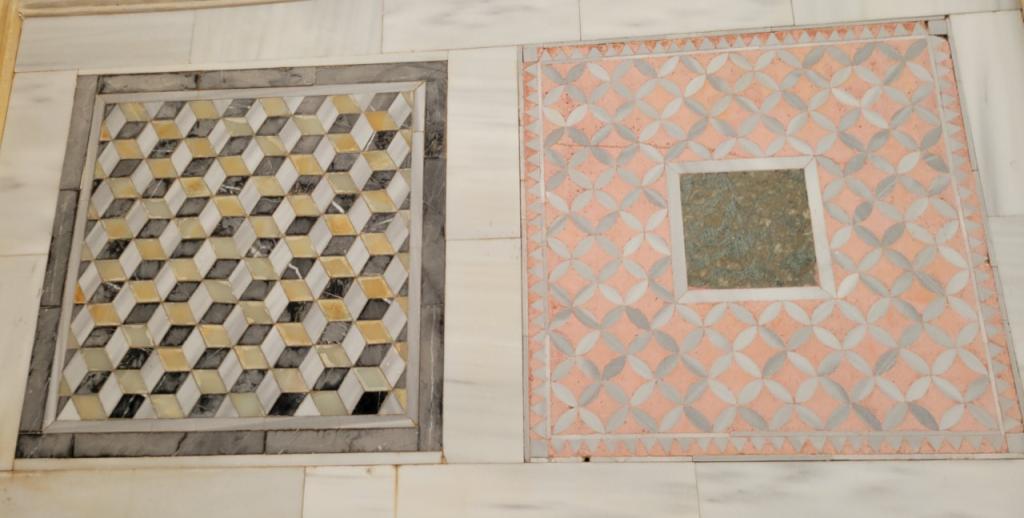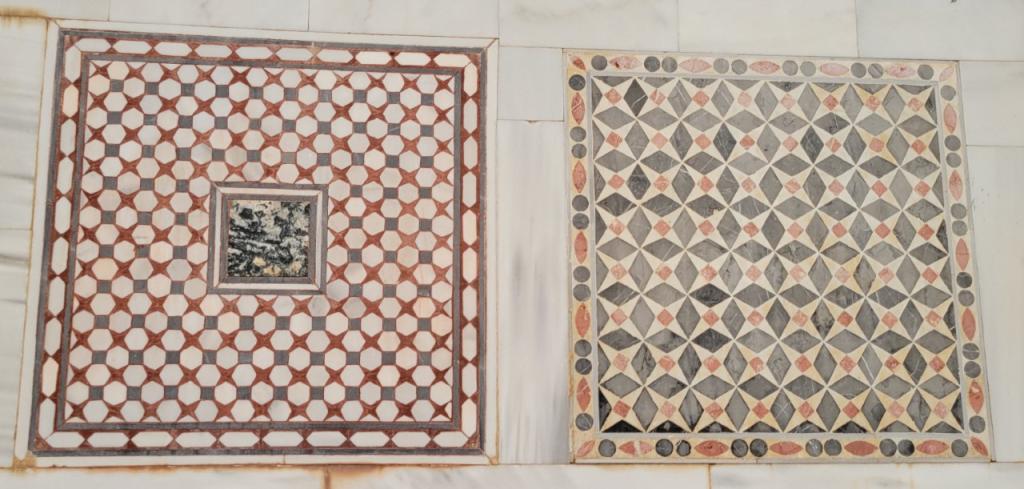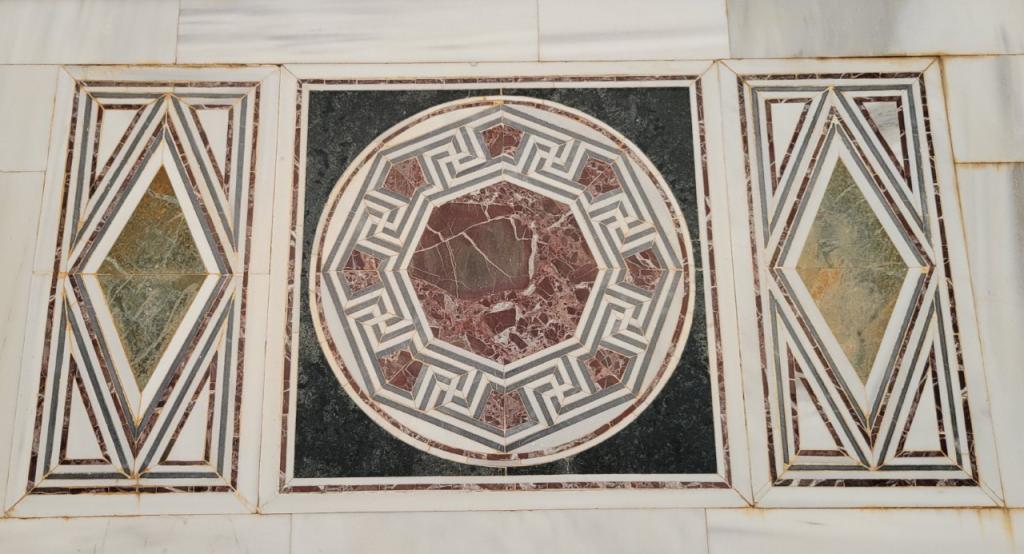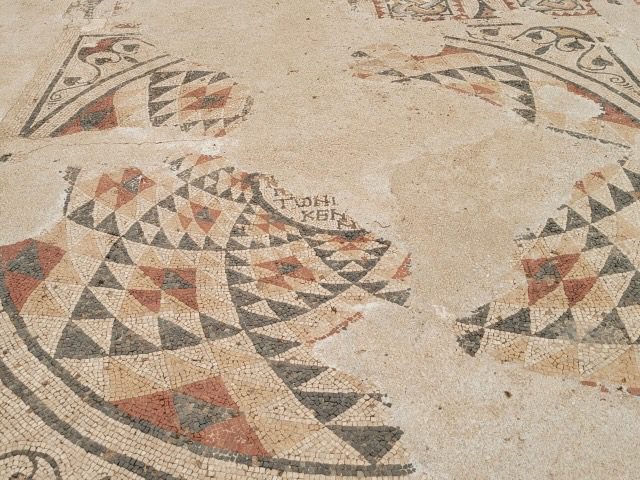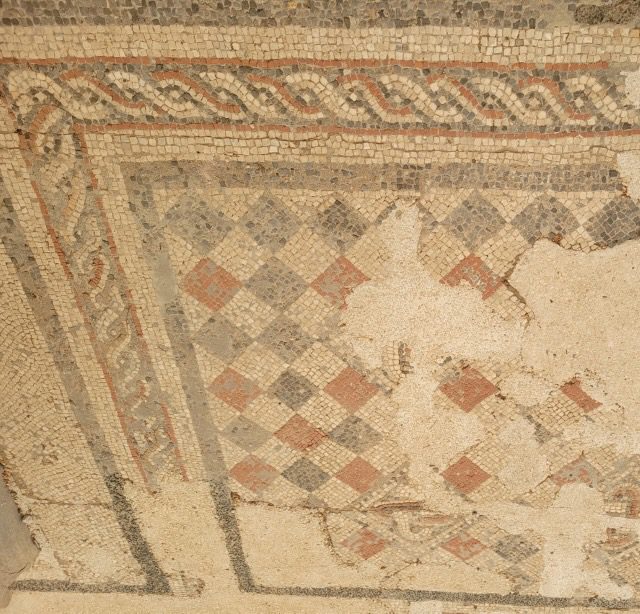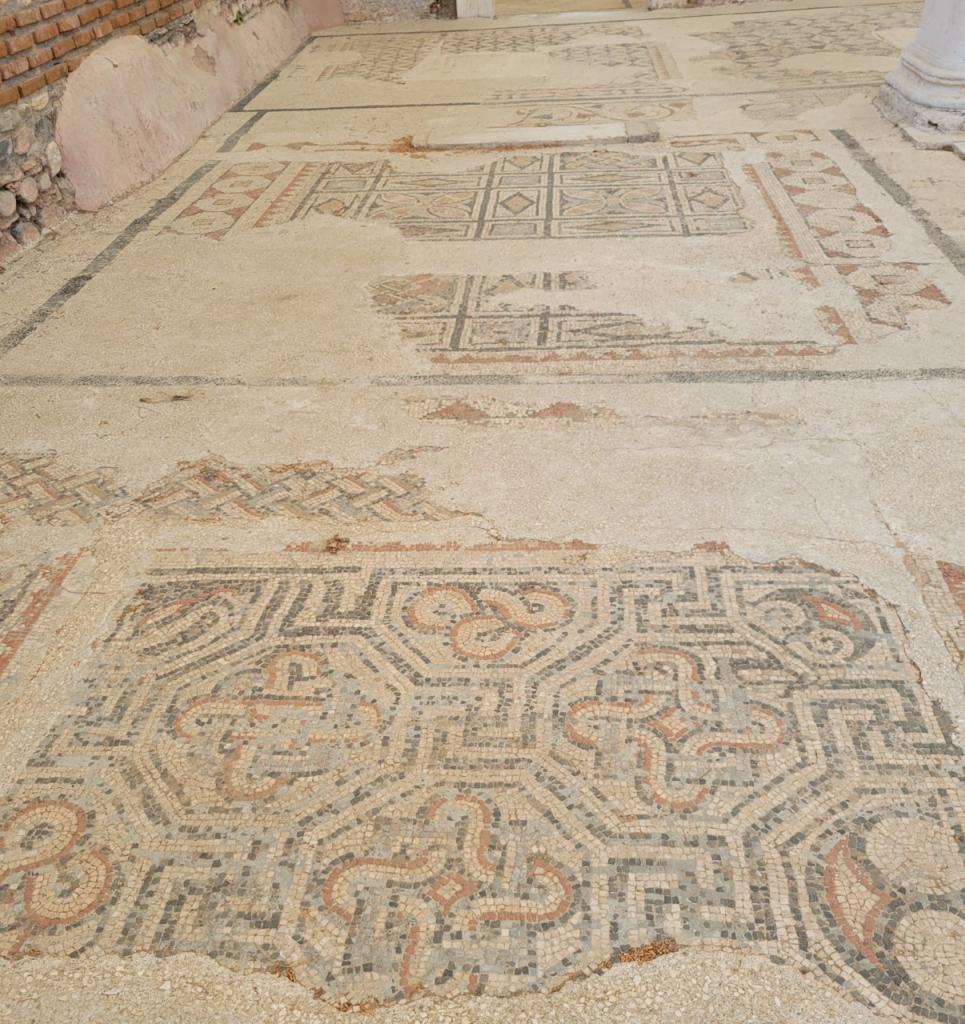The remains of the Roman road can be seen right beside the entrance way to the lower city of Sardis.
And as the picture shows, there were various sorts of shops that line the avenue or road. And these shops even had plumbing— notice the clay pipes on the left.
In the first century, many families ran a sort of fast food counter service out of the front of their houses, something you can see several times at Pompeii and Herculaneum. 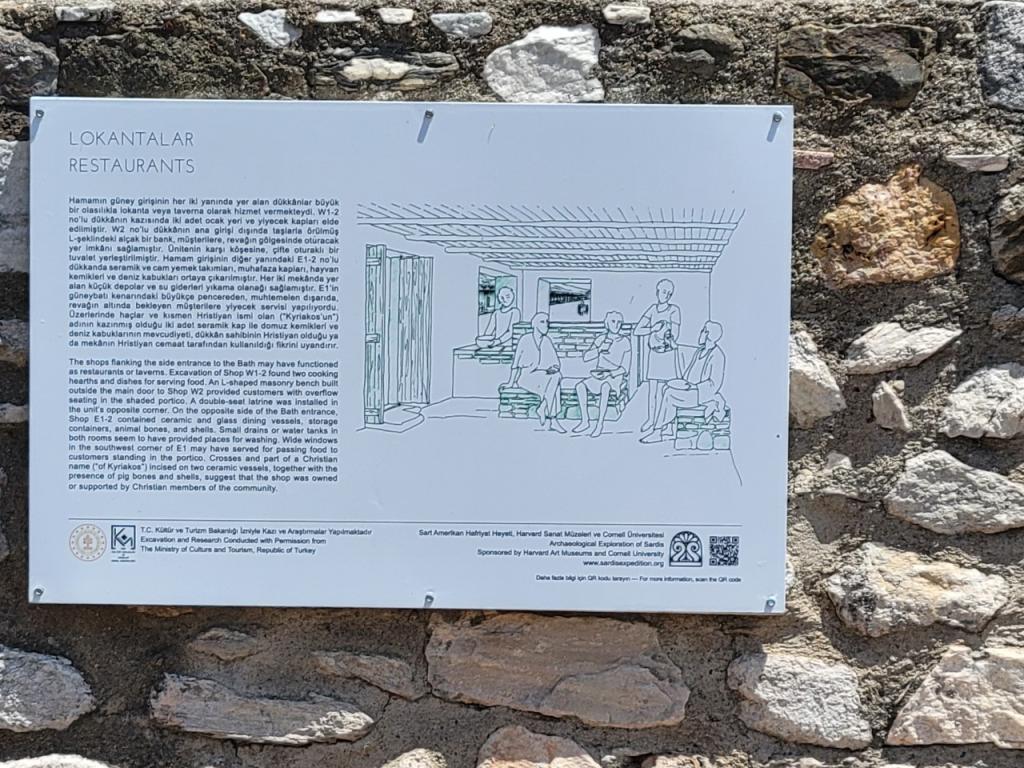
Notice that there were Jewish men working in shops right next to Gentiles, in close proximity.
Here’s a private residence on the same street (in a time long before business zoning)
Nearby was the men’s latrine…
Notice the commode seats…
Also nearby were board games to be played in the plaza…
And at the end of the long plaza was the gymnasium complex where men exercised sans clothes. As I mentioned, this is a reconstructed facade with some minority of pieces that are original… nevertheless it gives a good feel for what it would have been like in John of Patmos’ day.
Notice that the inscriptions are all in Greek, listing various Asiarchs and rulers who were probably patrons of this impressive building complex. Sardis, like Ephesus, was a Greek city, not a Roman colony city.
More importantly this building was right next to one of the most ornate and decorated synagogues anywhere in the first century.
Finally someone got the bright idea to put a protective roof over the synagogue so the mosaics in the floor and elsewhere would not be ruined.
This happened in the last couple of years. This synagogue is so large it even has a forecourt for Gentile God-fearers and visitors
Notice the pool for water, and perhaps even ritual washing of hands and feet. Below we see the scroll cabinet where the Torah would have been kept in the very back of the main part of the synagogue.
At the other end of the building is a reading table to roll out scrolls, which appears to have been repurposed because it seems to be pagan in character, perhaps even originally an altar.
Notice the fertility signs on the front (eggs), the temple columns and animal feet… and on the side an eagle….
The main decorative feature on the floors and some on the walls are non-iconic mosaics… i.e. lacking images of living beings…
The one below has a Greek inscription in the middle of it…
This is hardly much of a surprise since Diaspora Jews spoke Greek as their day to day language.
This synagogue shows that some Jews here had considerable wealth and were prospering, and were well-integrated into civic life.


